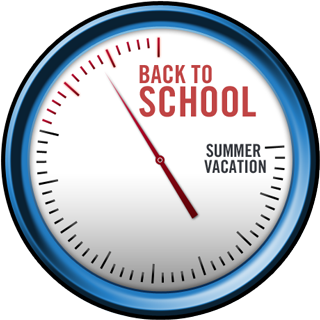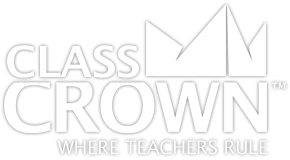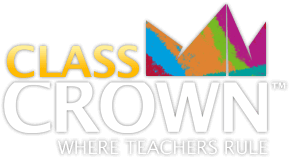 Summer is always the perfect time for teachers to reflect back on their past experiences, evaluate personal and professional growth, and set some goals for the upcoming year. As I reflect back on my first few years of teaching, one of the things that comes to mind immediately is my first few “first days” of school.
Summer is always the perfect time for teachers to reflect back on their past experiences, evaluate personal and professional growth, and set some goals for the upcoming year. As I reflect back on my first few years of teaching, one of the things that comes to mind immediately is my first few “first days” of school.
My first year of teaching, I taught 7th grade math and science. Since my class periods were only 50 minutes long, it was not difficult to decide what to do on the first day of school: introduce myself, teach class rules and expectations, give an overview of what we would be learning this year, and if time allowed do some kind of an icebreaker.
After teaching seventh grade for one year, I was fortunate to find a position in the grade that I had had my heart set on since making the decision to become a teacher: fifth grade. As the new school year approached, I was excited to be teaching the age group and curriculum I felt were best suited to me given my strengths as a teacher. But as the first day of school approached, a new thought occurred to me: What am I going to do with these kids all day long on the first day of school? I knew jumping into curriculum immediately was not wise. I knew that I needed to establish some ground rules, set expectations, and begin teaching procedures. I knew I needed to spend significant time getting to know the students, letting them get to know me, and letting them get to know each other. But what would this look like? Hadn’t I done it all the year before in only 50 minutes? What was I going to do with a full day’s worth of time?
I’m sure every new teacher experiences the same kind of panic I did at the thought of planning an entire day’s activities for the first time. And even veteran teachers may want to add new ideas to their general first day routine. As such, I’d like to share my first day plan. Over time, I tweaked some things and tossed others. The following is a look at the activities that I have found worked best for the first day of school:
TEACHER TRUE/FALSE QUIZ
Most students are nervous on the first day of school. They wonder what their new teacher will be like, who will be in their class, whether or not their new outfit is cool, etc. For some students, that nervous energy exhibits itself in poor behavior immediately upon entering the classroom. Whether they are deliberately testing the teacher’s boundaries or are simply revealing their nervousness, this poor behavior must be curbed immediately. Better yet, it should be preempted. I have found that one way to prevent poor behavior as students are entering the classroom is to have something for them to do immediately upon entering the classroom. And since students are inevitably curious about their new teachers, what better way to start the day than with a Teacher True/False Quiz?
The Teacher True/False Quiz is simply a selection of statements about the teacher, some of which are true and others of which are false. The students will guess which statements are true about their new teacher. After giving a few moments for students to make their guesses, the teacher will go over the correct answers. She can ask how many students think the answer is true versus false. Then she can provide the right answer and provide any additional related information about herself. It’s fun!
After completing the True/False quiz, the students will have a bit more information about you based on your answers. Now is the perfect time to fill them in on who their teacher is a little more. Tell them about your education, teaching history, family, etc.
NAME SOME HIGHLIGHTS OF THE YEAR
Students are always curious about what the year ahead is going to be like. I always gave them a few fifth grade highlights to look forward to. In my case, I shared that our year would include:
- Science camp/science fair
- Becoming excellent readers and writers
- Learning about US History
- Learning about the universe and human biology
- Continuous Improvement
- Getting to know each other
PAPER BAG PROJECT
In order to set expectations for the rest of the year, I assigned one simple project on the first day of school. I asked students to bring a paper bag with three items that were important to/represented each student. The following day, they were to present their items and explain their importance. I found this to be a perfect way to establish homework routines. Students were required to write the assignment in their agendas and have their parents sign the agenda. I even demonstrated a presentation with a few items that represented me.
INTRODUCE CLASSROOM MANAGEMENT SYSTEM
In my classroom, I used a currency system I called Space Bucks in order to reward good behavior and to discourage inappropriate behavior. I introduced the currency system and passed out all necessary items, including the currency, deposit book, and wallets. The entire system is for sale in our Teachers Pay Teachers store:

Check it out @ TpT →
SKITTLES GETTING TO KNOW YOU ACTIVITY
As a means to get to know each other and to provide some levity, we did an icebreaker activity you may have heard of. Students each choose 2 Skittles from a jar and are instructed not to eat them. (yet!) Once every student has 3 Skittles, show the students a poster explaining that for each of their Skittles, they will share something about themselves with the class:
- For every red Skittle, tell an embarrassing or memorable moment in your life,
- For every orange Skittle, tell a goal that you have,
- For every purple Skittle, tell an achievement,
- For every yellow Skittle, tell about a hobby or interest you have,
- For every green Skittle, tell a “favorite” – activity, vacation, food, etc.
COMING TO CARPET PROCEDURE
One of my main goals for the first week of school was to establish classroom procedures. One of the most important procedures in my classroom was the “Coming to the Carpet” procedure, where the students would leave their desks and sit on the carpet in front of me in order to be closer to see the pictures in a book, brainstorm, etc. It was vital that I teach this procedure well because if expectations were not clear, this could potentially become a chaotic time. Additionally, I wanted my students to get a sense that when I taught a procedure, I expected it to be followed correctly. My expectations for this procedure were that students would come to the carpet quickly, quietly, and with their hands to themselves. I expected them to push in their chairs as they came. I dismissed them to leave their desks and come to the carpet by row. We practiced the procedure several times and I rewarded students who were listening and following directions well with classroom currency (see above).
QUALITY STUDENT
Later in my career, the school district I was a part of was pushing a “Continuous Improvement” initiative. I absolutely loved it! One of the pieces of Continuous Improvement was teaching the students the meaning of quality and setting the expectation that we were going to be a “quality class.” While on the carpet, we discussed the word quality. Once students had a clear grasp of the concept of quality, I had the students do an affinity diagram for a “Quality Student.” I passed out a few post-it notes to each student and they thought about the characteristics of a “Quality Student” and wrote one idea on each of their post-it notes. Students would share their ideas and we organized them into like groups. Next, we discussed the basic idea of each group, which allowed us to identify the overall characteristics of a “Quality Student.” Based on our affinity diagram, I drew a picture of a student on a poster and placed each of our characteristics in the appropriate area of the poster and hung it up for reference in the classroom. I made sure the students knew we would be doing an affinity diagram for a “Quality Teacher” too so that they knew that I was also striving to be an excellent teacher.
GROUND RULES
After lunch, I would have the students practice coming to the carpet again to see how well they remembered my instructions from before lunch and recess. Once on the carpet, we completed another affinity diagram for the rules for our classroom. I would do my best to make sure that the rules the students identified for themselves included rules I felt we needed as well. Every time I completed this activity with a class, they would always create excellent rules for themselves. In general they included something like:
- Enter and leave quietly
- Raise hands to speak
- Be kind to others
- Pay attention
- Follow instructions
That evening, I created a poster with our class Ground Rules. We read the rules in unison as a class every morning in order to be reminded. They owned the rules much more because they were a part of creating them.
TEAMBUILDING ACTIVITY
In order to encourage a team spirit in the classroom and to give the students a chance to get up and move around, I had my students engage in a teambuilding exercise. Have the students line up in order according to the following:
- Youngest to oldest
- Shortest to tallest
- Number of siblings (For this exercise, you might have the students try determining the correct line up silently. It’s fun!)
ESTABLISH PROCEDURES
Whenever possible throughout the day, teach a class procedure. Practice it a few times if necessary. Some that you should be able to begin establishing on the first day of school include:
- Lining up to enter the classroom
- Lining up for recess
- Handing out papers
- Collecting papers
- Coming to the carpet
- Sharing during class discussion
Remember, the goals of the first day of school are for you and your students to get to know each other, to establish procedures and routines, and to get your students excited about the year ahead. Have a great year!!!

